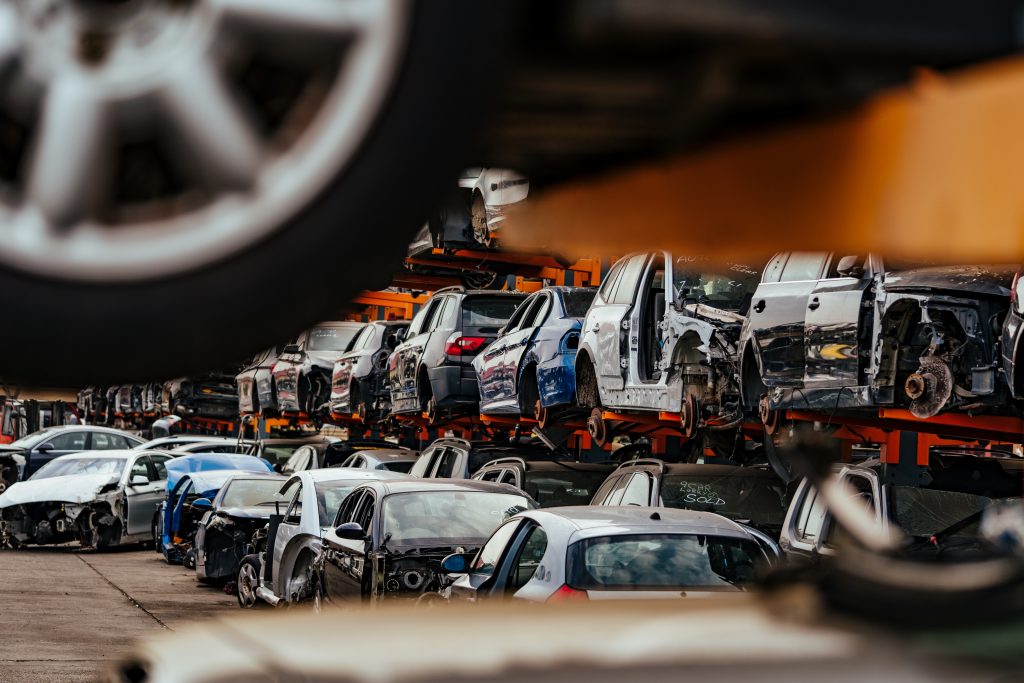When we think about the lifecycle of our vehicles, the concept of recyclability might not be the first thing that comes to mind. However, it’s a crucial aspect of sustainable living and resource management. In Australia, where a significant portion of the population relies on fuel-powered vehicles and a move toward achieving net-zero targets is eminent, understanding the recyclability of cars is essential for reducing our environmental footprint.
Let’s delve into the world of automotive recycling and explore just how recyclable our cars are.
The Anatomy of a Vehicle
Surprisingly, our vehicles exhibit high recyclability, with around 85-90 percent of their materials suitable for reuse or recycling. The major constituents, constituting roughly 75 percent of a car, are metallic materials encompassing both ferrous and non-ferrous metals.
Beyond metals, vehicles boast a diverse composition. The remaining 25 percent of a vehicle’s weight encompasses tyres, fluids, and an assortment of materials like glass, plastic, fabric, and rubber components. This diverse composition presents both challenges and opportunities in the realm of recycling. The intricacies involved in handling this mix of materials make the recycling process more complex. However, this diversity also opens doors for innovative recycling approaches, encouraging the exploration of new technologies to efficiently manage and repurpose these varied materials.
The Recycling Process
The auto recycling industry plays a crucial role in managing end-of-life vehicles. According to recent statistics, a significant portion of vehicles reaching the end of their life cycle is being recycled. This not only helps in reducing the environmental impact of automotive waste but also contributes to the economy through the extraction of valuable materials.
Efforts to increase the recyclability of cars in Australia are having a positive impact on the environment. Recycling reduces the need for raw material extraction, minimises energy consumption in manufacturing processes, and curtails the environmental footprint associated with the disposal of non-recyclable materials.
Reuse Before Recycle™
Guided by the principle of “Reuse, then Recycle™,” auto recyclers prioritise salvaging parts for reuse before dismantling vehicles. This strategic approach minimises waste by identifying components that can be given a second life. By embracing this philosophy, the automotive recycling industry not only lessens its environmental impact but also adopts a sustainable and resource-efficient method.
Before entering the recycling process, vehicles undergo a meticulous evaluation to identify and extract reusable parts, promoting a circular economy and reinforcing the commitment to environmental stewardship in the automotive sector.
Fluids and Their Reusability
Carefully managing fluids extracted from vehicles—used oil, antifreeze, lubricants, gasoline, or diesel—holds promise for reuse, bolstering the circular economy. This practice not only safeguards the environment but also conserves valuable resources.
By ensuring these fluids are handled responsibly, the automotive industry not only minimises environmental impact but also contributes to a sustainable model where resources are reused, reducing the demand for fresh raw materials. In essence, the proper management of vehicle fluids serves as a small yet significant step toward a more resource-efficient and eco-conscious automotive sector.
Electronic Components
In contemporary vehicles, the prevalence of electronic components and converters is on the rise. These components house valuable heavy and precious metals. Automotive recyclers play a pivotal role in meticulously extracting these electronic parts, ensuring their careful integration back into the supply chain. This process contributes to the creation of new electronics and metal products, fostering a sustainable cycle of resource utilisation.
Australia’s vehicle recycling sector reflects a positive trajectory, highlighting the automotive industry’s steadfast commitment to sustainability. Despite these advancements, challenges persist, stemming from the intricate mix of parts found in cars. However, this complexity isn’t just an obstacle; it serves as a catalyst for innovation and the development of state-of-the-art recycling technologies.
The dedication to sustainability is palpable. Adhering to the Reuse, then Recycle™ methodology, end-of-life vehicles undergo a thorough dismantling process, ensuring that components find new life in subsequent cycles. Ongoing efforts and strides in recycling technologies paint a picture of a more sustainable and eco-friendly future for Australia’s automotive sector. Consequently, when contemplating the recyclability of one’s car, the answer resounds affirmatively, accompanied by the anticipation of further advancements in the years to come.
When acquiring recycled auto spare parts, trust stands as paramount. With a two-decade-long leadership in the industry, we guarantee precision from the outset, assuring you of the right part every time. Our focus lies in obtaining top-tier salvage, dismantling only those parts that meet our stringent testing and cleaning criteria. Each part we offer comes with a minimum of 6-month parts and labour, No Fuss National Warranty, a testament to our unwavering commitment to your satisfaction.
Beyond providing an extensive inventory of over 1 million pre-owned parts, we prioritize rigorous quality control and employ knowledgeable parts assessors. This ensures a thorough evaluation of the age and usage of parts, guaranteeing that your purchase aligns precisely with your expectations.
Explore our online catalogue now to discover the engine perfectly suited to your vehicle, and experience firsthand the benefits of Parts Plus.



